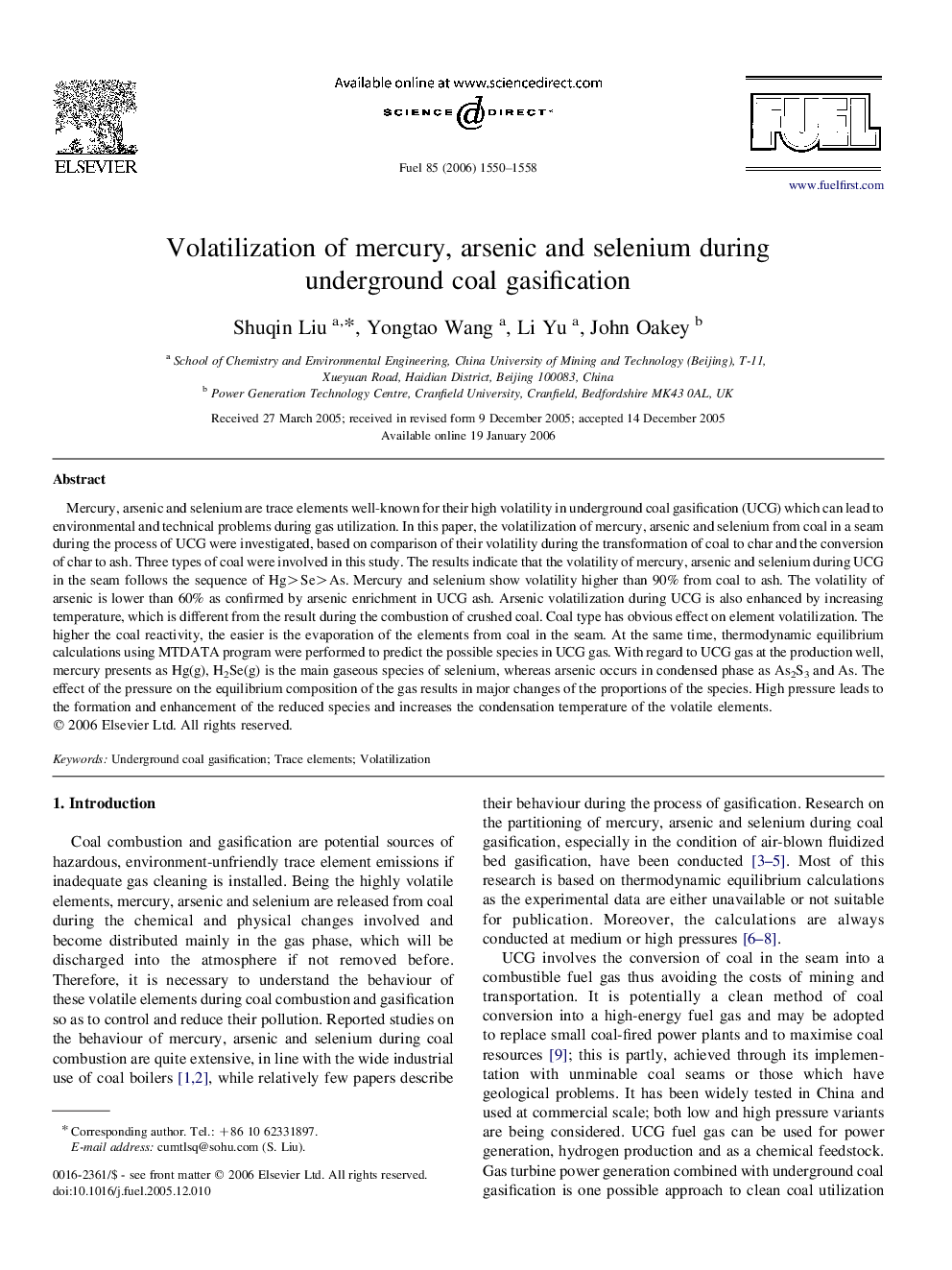| Article ID | Journal | Published Year | Pages | File Type |
|---|---|---|---|---|
| 208575 | Fuel | 2006 | 9 Pages |
Mercury, arsenic and selenium are trace elements well-known for their high volatility in underground coal gasification (UCG) which can lead to environmental and technical problems during gas utilization. In this paper, the volatilization of mercury, arsenic and selenium from coal in a seam during the process of UCG were investigated, based on comparison of their volatility during the transformation of coal to char and the conversion of char to ash. Three types of coal were involved in this study. The results indicate that the volatility of mercury, arsenic and selenium during UCG in the seam follows the sequence of Hg>Se>As. Mercury and selenium show volatility higher than 90% from coal to ash. The volatility of arsenic is lower than 60% as confirmed by arsenic enrichment in UCG ash. Arsenic volatilization during UCG is also enhanced by increasing temperature, which is different from the result during the combustion of crushed coal. Coal type has obvious effect on element volatilization. The higher the coal reactivity, the easier is the evaporation of the elements from coal in the seam. At the same time, thermodynamic equilibrium calculations using MTDATA program were performed to predict the possible species in UCG gas. With regard to UCG gas at the production well, mercury presents as Hg(g), H2Se(g) is the main gaseous species of selenium, whereas arsenic occurs in condensed phase as As2S3 and As. The effect of the pressure on the equilibrium composition of the gas results in major changes of the proportions of the species. High pressure leads to the formation and enhancement of the reduced species and increases the condensation temperature of the volatile elements.
